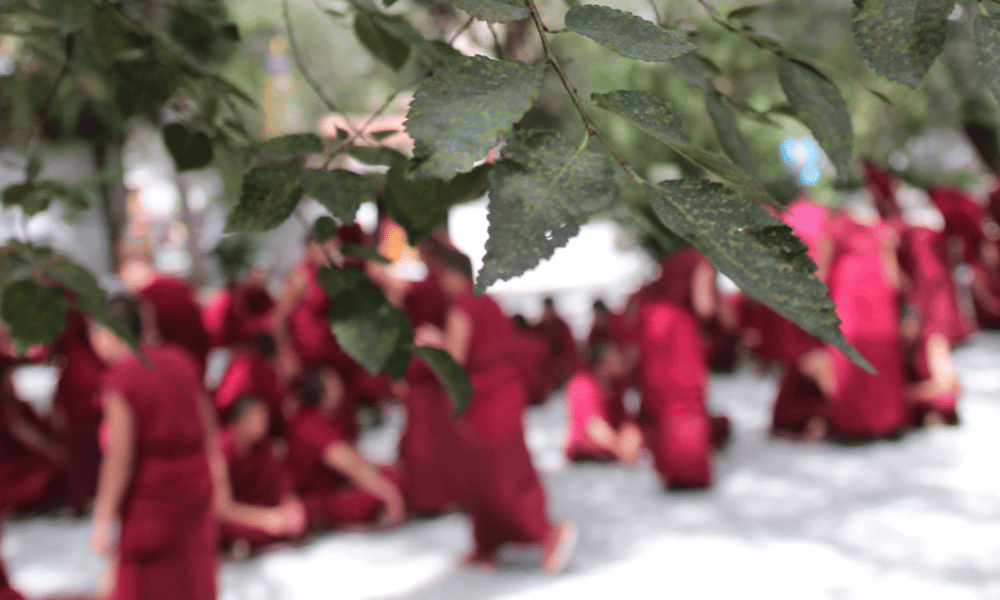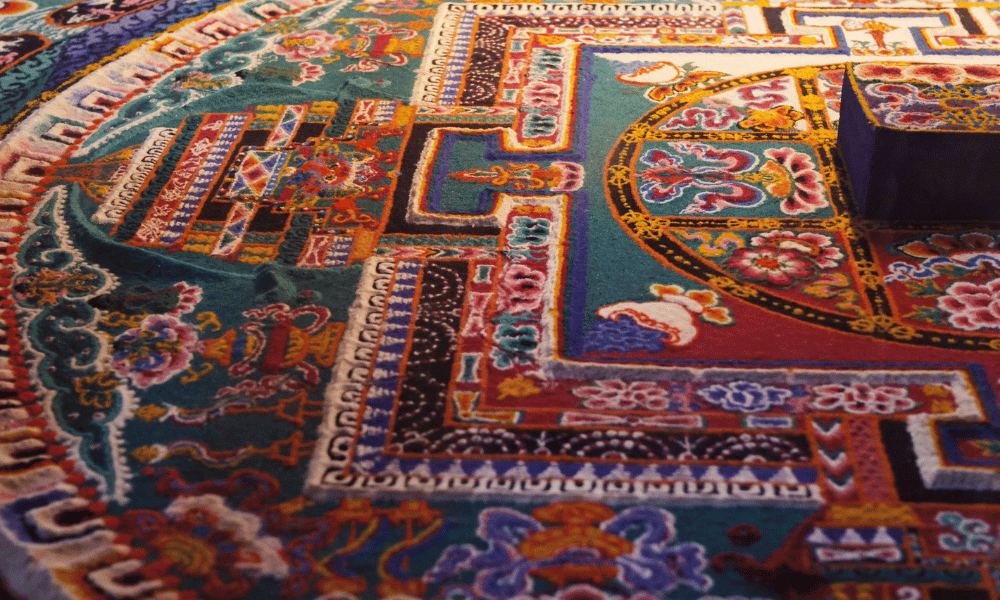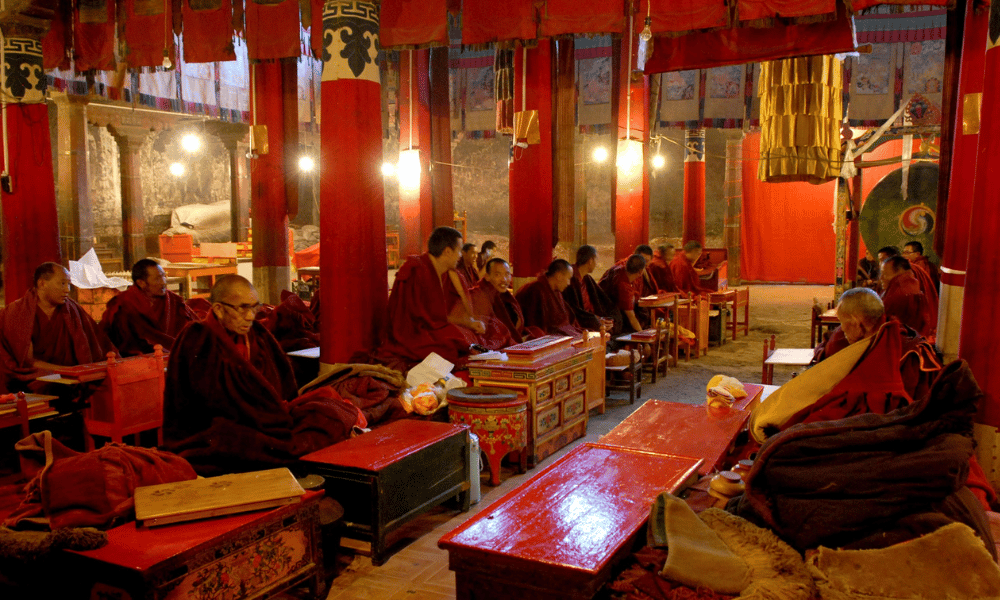Short 4 Days Lhasa Tour
Trip Facts
Trip Highlights
- Get exposed to unique landscapes, rich culture, and spiritual significance.
- Jokhang Temple; spiritual Center for Tibetan Buddhists in Tibet.
- Short hike to Drak Yerpa - the holy meditation cave.
- Potala Palace; winter palace of the Dalai Lama.
- A short tour to Lhasa - the holy ground.
Trip Overview
This 4-day Short Lhasa tour will open gateways to an exclusive travel experience. Lhasa is a beautiful city in Tibet and is one of the few places that offers something for everyone. Tibet is located at the border of Nepal and China, and Lhasa is the city inside Tibet. During your travel to Lhasa, Tibet you will visit outstanding monuments with precious tombs of excellent personnel in Tibetan Buddhism history, numerous shrines, thousands of hand-painted scrolls, murals, and exquisite statues. You will also catch a glimpse into Tibetan people's life. Besides that, it is ideal for you if you have a busy schedule as the whole trip is just 4 days, which is enough to sneak a peek into Tibet, the forbidden land.
Tibet’s phenomenal landscape is like no other place on Earth and is extraordinary to visit and explore new things. This tour package will take you to Lhasa. Lhasa simply translates to (Lha, the ‘abode of the Gods’) sometimes also known as the Forbidden City, the former home of one of the greatest spiritual leaders, his holiness Dalai lama, and the center of Tibetan Buddhist life. The topography is unique with rugged, remote, and simply unforgettable environments. Tibet is also called the ‘’Roof of the World’’ as it is located at an average elevation of 3,000 m above sea level. Tibet is known for numerous fascinating things and Tibetan Buddhism has a significant influence on local residents.
This amazing paradise lies at a high altitude place that showcases raw and semi-arid areas with natural beauty, art, and tradition to engross people worldwide. It lies behind the Mountain of Everest, opening the road to the second Everest Base camp from China. Lhasa is a destination that is certainly worth visiting for those seeking a unique and enriching travel experience. Tibet welcomes foreigners from all walks of life whether it is a fresh start, an exploration of Rich and unique culture, or simply a spiritual beginning. Behind Tibet, Lhasa with this unique geography is situated on top of the Tibetan Plateau. It has many things to explore from delicious Tibetan cuisine to Tibet's architectural masterpieces.
It is also considered the holy ground as it used to be the home of his holiness the Dalai Lama. Making each place in Tibet holy and significant to Tibetan Buddhists all around the world. Tibet is the land of high mountains and giant high-altitude lakes, all of which have some religious or holy significance in Tibetan religion and culture. Most of the signature landmarks are in Lhasa, where you will travel and get first-hand experience. There are breathtaking lakes, the most sacred are the great three holy lakes of Tibet which are Lake Manasarovar, Lake Yamdrok, and Lake Namtso. You can also start your journey of Kailash Mansarovar Yatra via Lhasa. Along with the natural beauty, Tibet proudly boasts its amazing ancient architecture, mostly religious structures such as monasteries, nunneries, Buddhist administrative buildings, and other significant places.
Tibetan Buddhism is the prominent religion of Tibet. People strictly follow the doctrines and teaching daily, meaning you will see people practicing meditation and devotion around the monasteries. Lhasa is the perfect place to see the spectacular culture and experience peace. People of Tibet are very sweet and helpful with a peaceful aura so it's normal if they offer you sweets, food, and a warm smile.
Attraction in Lhasa - Jewels of Lhasa
Lhasa is one of the most beautiful Buddhist destinations that you will ever stumble upon. It is full of places that will take your breath away and quite literally due to the high altitude and bit lower level of oxygen than normal places. Distinguishing the historical landmarks is pretty easy as they are beautifully decorated with vibrant prayer flags and surrounded by monks and devotees. From the century-old monasteries to the former palace of the Dalai Lama are the mentioned sights you will explore. The places that you will visit during your tour are listed below with brief descriptions.
Potala Palace - The winter palace of the Dalai Lama
Potala Palaces is one of the major attractions of Tibet which symbolizes Tibetan Buddhism and its central role in the traditional administration of Tibet. This magnificent landmark was built in the 7th century as a gesture of love. The remarkable structure is an architectural masterpiece situated at an elevation of 3,700m beautifully blessing its visitors. Potala Palace is a fine example of Traditional Tibetan architecture and is regarded as one of the most breathtaking museums. Before it was a museum it used to be a residential building of the Dalai Lama. The palace houses a remarkable collection of Buddhist historical documents and artifacts of Tibetan culture including the tombs of eight Dalai Lamas, thousands of statues, sculptures, precious objects, and Sutras which are Buddhist scriptures.
The entire palace is divided into two parts: the white palace and the red palace. The red palace represents the religious space where the Dalai Lama lived and the white palace is used as the monk's dormitory. It is open to the public and tourists, but you cannot take pictures and videos inside the palace.
Jokhang - The house of Buddha
Jokhang Temple also known as Qoikang Monastery and Zuglagkong is a Buddhist temple/monastery. It was built by Tubo Srongtsen Gampo in 652 to marry Nepali princess Bhrikuti who is represented as the Green Tara in Tibetan iconography. It is one of the most important religious sites in Tibet since it’s housing the statue from the time when Shakyamuni Buddha lived. Shakyamuni is a historical personality known as Siddharth, the son of Suddhodana and his queen Maya, who became the Buddha upon achieving enlightenment. The main building of the temple is four floors high and beautifully decorated with Tibetan architecture. Most of the buildings aren’t higher than four floors meaning you can see the arid hills without any hesitation, yet another incredible attraction.
Barkhor Street - The Holy Road
Barkhor Street also known as old Lhasa Town or Bakuo Street, is commonly known as the ‘’Heart of Lhasa’’. Barkhor Street is also called the ‘’Holy Road’’ by the locals as the road goes around Jokhang monastery. It is a lively place for tourists and it has a mini market on both sides of the road that includes many small shops, stalls, local restaurants, and street vendors. The shops sell exclusive handmade souvenirs, such as Buddhist Thangkas, prayer flags, statues, prayer wheels, butter lamps, and traditional incense used as offerings in the temples and monasteries. On the street, you will see devotees doing Kora (Circumambulation) in the most sincere way you will see anywhere else. You will notice people laying down on the ground on their stomachs and standing up while chanting mantras for about 1000m, the sight will make you question your faith for sure.
Drak Yerpa - The ancient meditation cave of Lhasa
It is internationally known as the meditation cave of Lhasa and is the holiest cave in Tibet used as a meditation spot for centuries. It is located about 16 km northeast of Lhasa. It is a perfect place to experience monastic life and fully indulge in meditation with a beautiful valley view. This is the very place where great personals of Tibetan Buddhism like Guru Rinpoche and Atisha meditated. It is perfectly situated at an elevation of 4,400 m above sea level providing a peaceful sight and a great day trip from Lhasa. To access the ancient cave one must hike up the mountains. As you walk up to the monastery you will see people selling incense and butter for offering purposes. It is the oldest meditation monastery and you will get a phenomenal view of the Lhasa city along with the surrounding valley view.
Norbulinyka - The Treasure Garden
Norbulingka which means ‘’Treasure Garden’’ or ‘’Treasure Park’’ is the world’s highest and largest garden. It is located in the western suburbs of Lhasa just 2 km east of the Potala Palace. It was built in the mid-18th century. It is one of the best-preserved gardens with ancient artifacts and a horticulture garden. The garden combines gardening with architecture and sculptures, the garden has 3 parts the courtyard of the palace, the palace, and the forest with over 400 sets of rooms. Tourists also call this place ‘’plateau oxygen bar’’ as the world’s highest-located garden at an elevation of 3650m above sea level. If you visit Tibet in August you will witness the Shoton festivals where Tibetan opera shows will be presented.
Sera Monastery - The Hailstone Monastery
‘’Sera’’ means Hailstone and blooming wild roses in the Tibetan language so after the completion of the monastery it was named ‘’Sera’’. According to Tibetan legends, the hill behind the monastery was covered with wild roses, hence the name of the Great Monastery. The monastery goes by the common name Sera Monastery but the full name is Sera Mahayana Monastery. Sera Monastery is one of the great three Gelug University monasteries built as part of the Puritanical Buddhist revival in Tibet. Around 6000 monks are learning and practicing the doctrines of Tibetan Buddhism. It is one of the finest monasteries where you can witness the debate session according to a fixed schedule. One of the main attractions of this place is monks respectfully debating on their understanding and learning of religious doctrines.
Detailed Itinerary
Arrival in Lhasa
Lhasa Full-day Sightseeing
Trip to the Drak Yerpa
Departure from Lhasa
Trip Guide
The information given about the Short Lhasa Tour is in-depth, feel free to contact us 24/7 for any kind of assistance through Email or WhatsApp. You can write an email if this trip doesn't fit your vacation schedule and requirements. We aim to offer the best possible travel experience to the customers. Depending on the needs of the visitors and the group size, we customize each vacation package. We will put together a bespoke itinerary just for your private group.
Travel insurance: Travel insurance is important before traveling to a new place especially when you are traveling for adventure. Travel insurance covers risks such as loss of personal belongings, and any unexpected expenses. Travel insurance also covers sudden medical emergencies such as accidents. It also covers high-altitude emergencies. Travel insurance is not compulsory but highly recommended.
Medical emergency: If you face any medical emergency such as high altitude sickness your professional guide will help you and transfer you for medical attention. Tibet lies at an elevation above 3000 and high altitude sickness is a possible medical condition. For such a situation, your guide carries a well-equipped first aid kit along with portable oxygen, ensuring nothing happens to you.
High-altitude sickness: During the Tibet tour you will stay at an elevation above 3000m. Tibet is the only city located at this altitude which increases the chances of getting altitude sickness. Noticing a lower oxygen level is normal and you will acclimatize on the first day before you start your tour. Altitude sickness is unpredictable; it can happen to anyone despite being physically and mentally fit. As you gain altitude, the chances of getting altitude sickness also slightly increase. To avoid getting altitude sickness you should drink 5-6 lt water per/day and food with high carbohydrates. Walking slowly and acclimatizing decreases the chances of getting altitude sickness. Focus on your breathing and maintain your walking pace.
Do’s and Don’t:
-
Select the ideal time to travel.
-
Select a reputed trekking/ travel organization.
-
Training and getting ready for any kind of situation are necessary.
-
Carry all the necessary paperwork (Tibet Entry Permit).
-
Maintaining body hydration is important while traveling to high elevations.
-
Don’t take pictures and videos inside the monasteries, temples, or any religious sites.
-
Hire a licensed tour guide to get information about the place such as its history, and importance.
-
Wear appropriate clothing during the monastery visit.
-
Respect the culture and people of the area.
-
Travel for experience and not for the sake of traveling.
-
Don’t litter, put trash in its place.
Why with Altitude Himalaya: Altitude Himalaya is one of Nepal’s growing travel companies providing excellent service to its clients. We believe in providing quality experiences and memories. We are concerned about maintaining and following our own standard service that includes a private transfer, at least a 3-star hotel accommodation in urban areas, the best available lodges/tea houses at the trekking trails, and dedicated personalized assistance. Additionally, we also operate our trips in Bhutan and Nepal.
Frequently Asked Questions
-
How to reach Tibet?
There are two ways to access Tibet, Lhasa. One is from China, Mainland, and from China, you can either take a flight from Beijing to Lhasa with a stopover in Xining or a direct flight you can take the train on the Qinghai Tibet railway which will take around 40 hours to complete the journey. Another way to visit Tibet is from Nepal which is competitively easier than from China. You can take a flight from Nepal to Tibet which is the fastest route. (Flight time 1 hour 45 minutes) The direct flight operates from Kathmandu, Nepal to Tibet, Lhasa which is the best way for those who are short on time.
-
How to reach Tibet overland?
If you don’t want to travel via road you can reach Tibet by air from either China or Nepal. From China, you need to take a flight from Beijing to Lhasa with a stopover in Xining or a direct flight which takes 4 hours and 25 minutes. If you are traveling from Nepal you can get a direct flight from Kathmandu, Nepal to Lhasa, Tibet which takes 1 hour 45 minutes.
-
What travel documents do you need to visit Lhasa?
You will need a special permit to visit Tibet. Without the Tibet entry permit, you are not allowed to travel to Tibet. It takes around 8 to 10 days to get the Tibet permit after applying for it. Typically the permit is valid for a maximum of three months.
-
When is the best time to visit Lhasa, Tibet?
Lhasa’s average altitude is around 4,000m and is called the ‘’Roof of the World’’ for a reason. Due to its high altitude, the temperature of this place is low and the best time to visit is the summer season as the temperature remains warm with sunny and toasty weather. Also in August Tibetan celebrate one of the important festivals called ‘’Shotun’’ which translates to a sour milk banquet or Yogurt festival that lies in the summer season.
-
Is there any possibility of getting high altitude sickness?
Yes, there are chances of getting high altitude sickness as Lhasa is located at an altitude above 3,000m /9,845 ft, and the risk of getting the high altitude sickness slightly increases as you cross the elevation of 2,500m. However, while your visit to Lhasa, you will acclimatize on the first day which will reduce the possible chances of getting the high altitude sickness. Also, your tour guide will be prepared for such a situation and will assist you during your visit.
-
Is Tibet safe to visit?
Yes, Tibet is perfectly safe to travel as the crime rate in this place is notably low. Also, people require a special permit to access and Tibet is internationally connected by air only through Nepal so it's totally safe. Tibetan people are very helpful and sweet as well.
-
Can you visit Tibet solo?
No, you are not allowed to travel to Tibet alone, you must go through a travel organization and must hire a tour licensed tour guide throughout the trip to Tibet. Tibet has strict rules and you must follow them if you are planning a visit.
Services Includes
-
Airport pick up and drop off on a private basis.
-
A private A/C vehicle for all the mentioned transportation and sightseeing.
-
All (03 Nights) hotel accommodations are based on double-sharing deluxe rooms.
-
All mentioned sightseeing entrance fees.
-
Daily breakfast and dinner at the hotel.
-
All government and local tourism taxes.
-
Professional experienced licensed tour guide throughout the tour.
-
Well-equipped medical kit along with portable oxygen.
-
Driver and guide’s allowance, salary, fuel cost, and toll/taxes.
-
Tibet visa fee per person
Services Excludes
-
Personal expenses
-
International flight to reach Tibet.
-
Tips to driver and tour guide. (Not required but recommended)
-
Services that aren’t mentioned above.
Why Travel With Altitude Himalaya?
We believe in the quality services to accommodate our guests 360 degrees need with tour personalization and customization. Our dedicated and experienced team believes not only in arranging trips, but making creating life long memories. Our travel experience within the region of Nepal, Bhutan and Tibet could make a memorable trip of yours.
Confirm Your reservation Now


TALK TO AN EXPERT
we can help you find your perfect holiday
Mr. Kiran has experience of 10+ years in tourism across Nepal, Bhutan and Tibet holiday arrangements to thousands of travellers from around the world. He will help you to figure out the best possible vacation plan according to your choice and preference.







 Duration
4 days
Duration
4 days
 Trip Difficulty
Easy
Trip Difficulty
Easy
 Average Group Size
2-10
Average Group Size
2-10
 Trip Code
SLT
Trip Code
SLT
 Start Point
Lhasa
Start Point
Lhasa
 Trip End Point
Lhasa
Trip End Point
Lhasa
 Accomodation
3 Star Hotels
Accomodation
3 Star Hotels
 Meals
As Mentioned
Meals
As Mentioned
 Transportation
As Mentioned
Transportation
As Mentioned
 16 KM
16 KM
 Send an email
Send an email +9779823000055
+9779823000055 +9779823000055
+9779823000055